Similar Posts
I would like to share a great milestone in the history of my own parish – the painting of the dome. Holy Ascension in Charleston, South Carolina, was consecrated in 2008. We have looked forward to the completion of the dome with great anticipation, and the results have far exceeded my own expectations. I believe it is a project of exceptional artistic interest, and so I have included these pictures in the hopes that it may inspire others.
The dome was painted by three artists. Dmitri Shkolnik designed the composition and many of the specific details, such as the ornamental borders and inscriptions. His assistant, Aleko Mchedlishvile, painted the borders, backgrounds, and other details. The bulk of the work was accomplished by Vladimir Grygorenko, who worked for many weeks, drawing and painting all the figures. Their collaboration worked well, combining Dmitri’s particular skill with ornamental designs and colors with Vladimir’s virtuosic abilities at figure painting in a 12th-century-inspired style.
The composition is unusual, partly for reasons determined by the shape of the dome. It is a true hemisphere, which gives it a larger surface area than most ancient domes (which were usually shallow and nearly flat at the top). And since the windows are relatively close together, Dmitri decided to move the prophets up above the windows, where they appear to stand upon the painted borders. Above them there are the angels, some in rondels and some flying freely, which appear to float in the open sky between the prophets and Christ. I find it to be an exceptionally animated and pleasing composition, perhaps suggestive of Christ as the conductor in an angelic dance or symphony.
The painting was done in silicate paint on a lime/cement-based plaster. The church was originally plastered in this material (manufactured by Keim Mineral Coatings) in preparation for painting with silicate paint – an extremely durable medium that resembles true fresco, but which is painted on dry plaster. Vladimir Grygorenko is recognized as an expert in this material, having investigated its use for iconography early on. He has developed a marvelous open and brushy style for which this paint is very well suited. His faces in particular, with their economical brushstrokes and big expressive eyes, read exceptionally well from a distance.
Having designed the church building, it was my particular concern that the iconography should integrate well with the architecture. I felt that a key to this was the treatment of the twelve windows below the dome. When we built the church, we installed plain modern windows, leaving open the option to add decorative grilles at a later time. I have noticed that in other churches, iconography painted adjacent large plain glass windows looks unsettled. The totally clear windows violate the principle of introversion that defines a liturgical space, and in their plainness, they appear incompatible with the richly detailed surface of iconographic murals.
So I designed substantial decorative grilles and installed them against the window glass before the iconographers began their work. The panels are made from cabinet plywood and hold handmade blown-glass rondels. The blown glass, wavy, yet perfectly transparent, imparts a marvelous sparkle to the light. It also softens the sunbeams, breaking them into delicate streamers of refracted light. These grilles are reminiscent of ancient Byzantine windows, though the scale is somewhat larger, and with the open diamonds between the rondels, the aesthetic also draws from seventeenth-century Ottoman and Athonite windows.
The windows proved to be highly successful. With their colorful ornaments painted around them, the effect is truly paradisiacal. And the architectural integration is magnified by the huge choros chandelier, which attaches to the painted bands, and which has hanging glass lamps that refract the light from the windows. I cannot overstate the visual effect of all these elements together. The iconography seems to adorn the inside of a sparkling jewel box. It is a kind of beauty we associate with small and precious things. Yet here we see the beauty of Christ reigning over the entire cosmos, gazing down from high above the starry celestial sphere. In this conflation of scales – the prismatic sparkle of glass, filigree, and painted ornaments – the vastness of prophets and angels gathered round the throne of God – perhaps we can truly see the magic of liturgical arts working together to reveal the Kingdom of Heaven in our midst.
The following are pictures of the project as it progressed, along with details of each completed figure:
Details of the twelve Prophets completed:
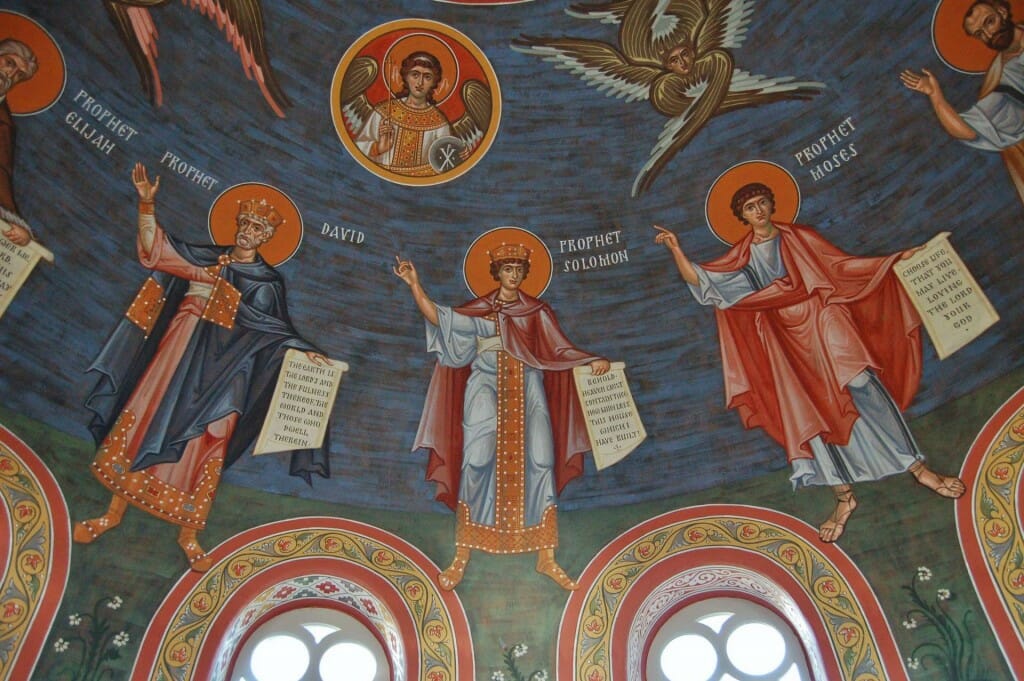 Vladimir begins work on the pendentives:
Vladimir begins work on the pendentives:
Details of the completed pendentives:
Vladimir also painted the Deesis in the narthex:
And a few more pictures of the completed project:


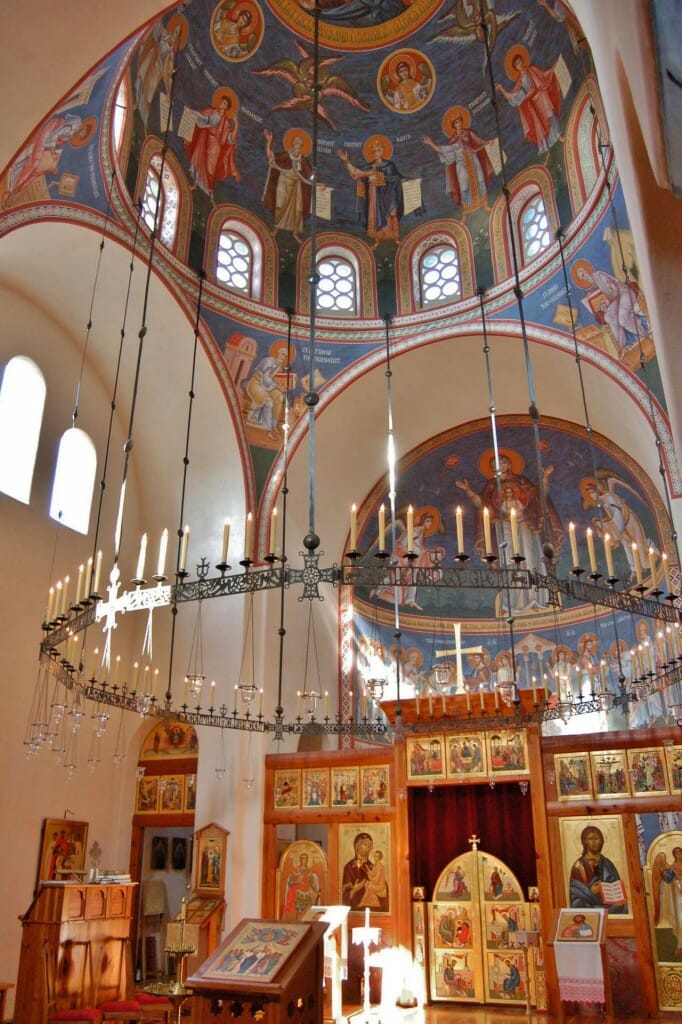

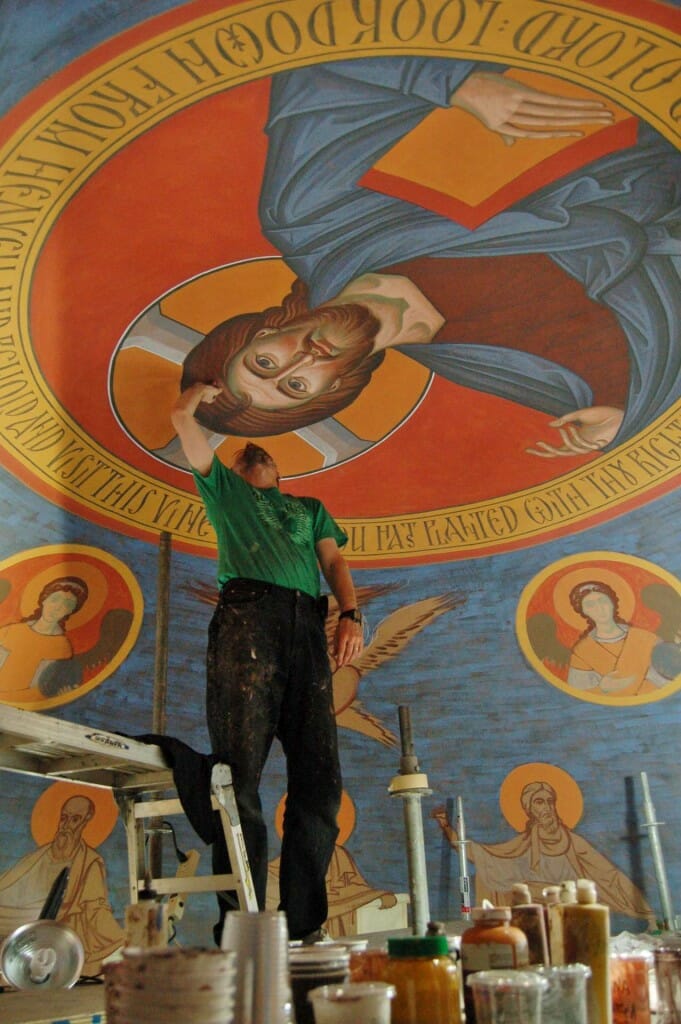

























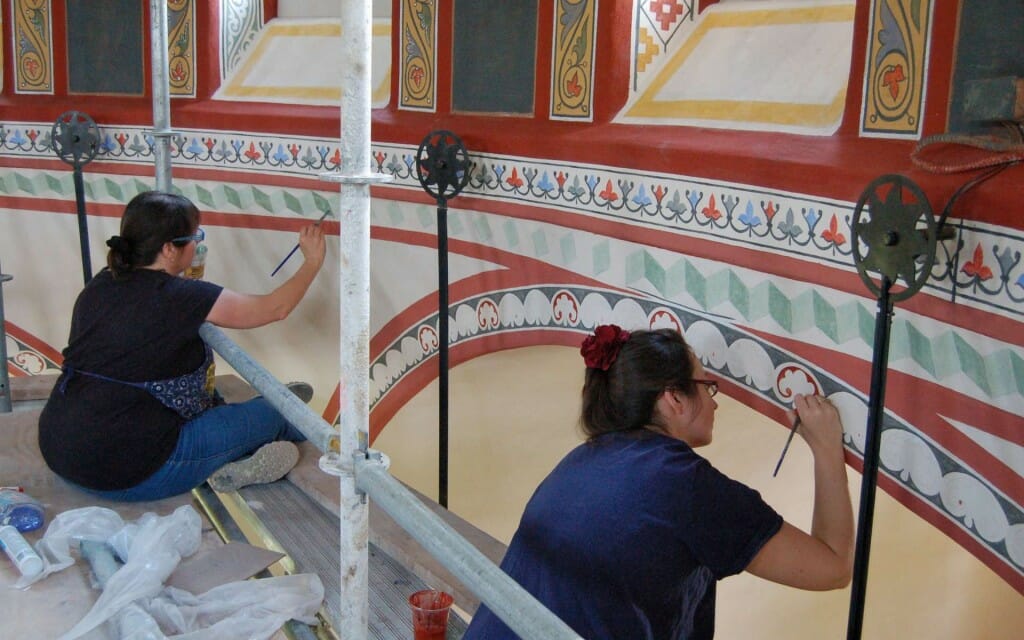









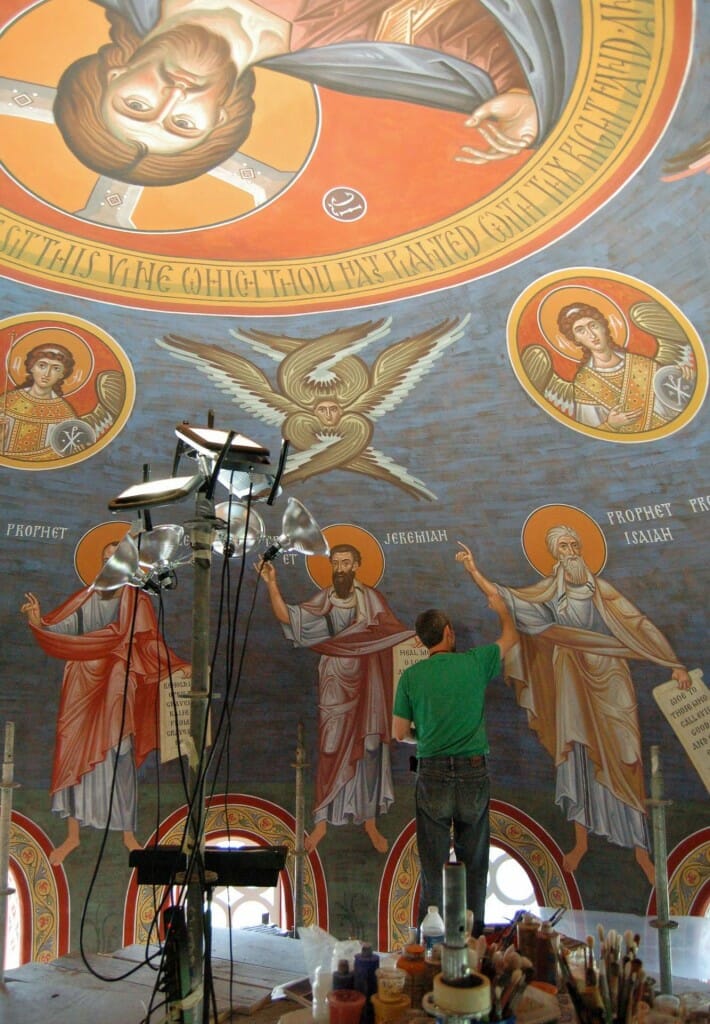


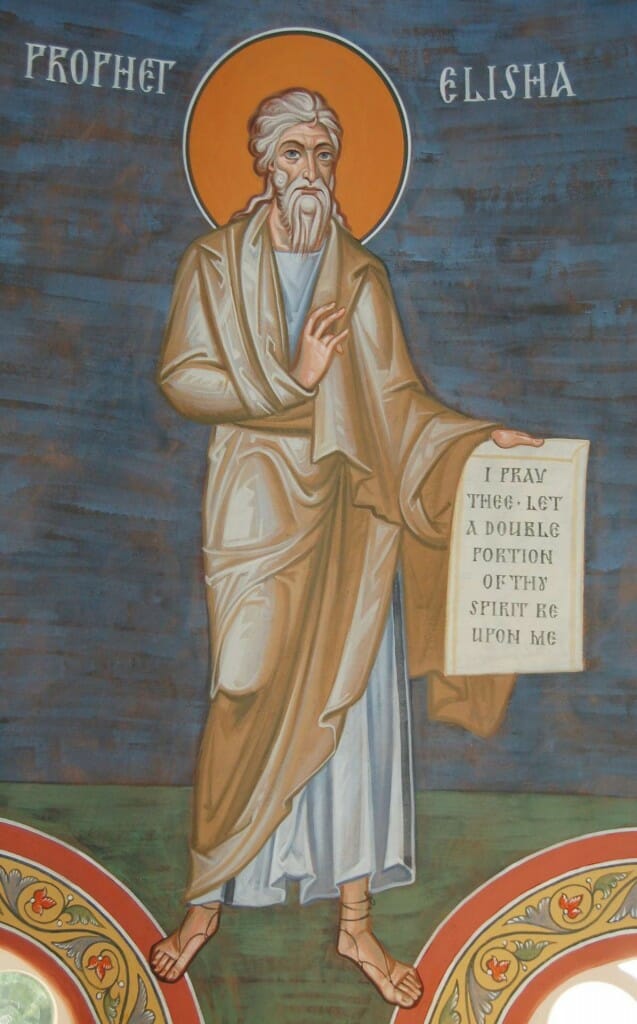











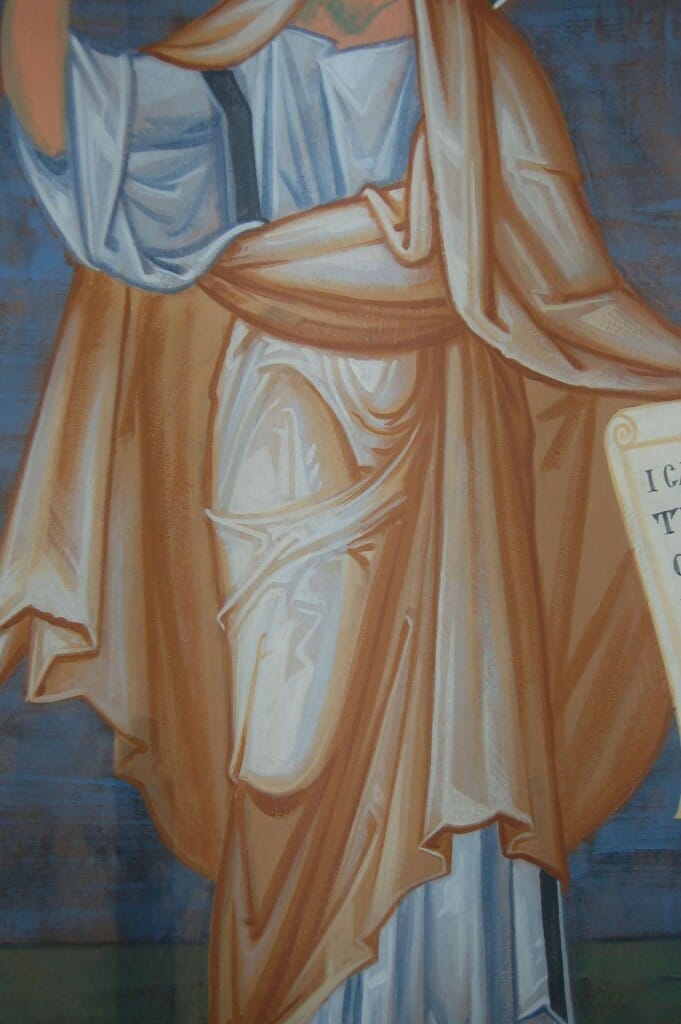







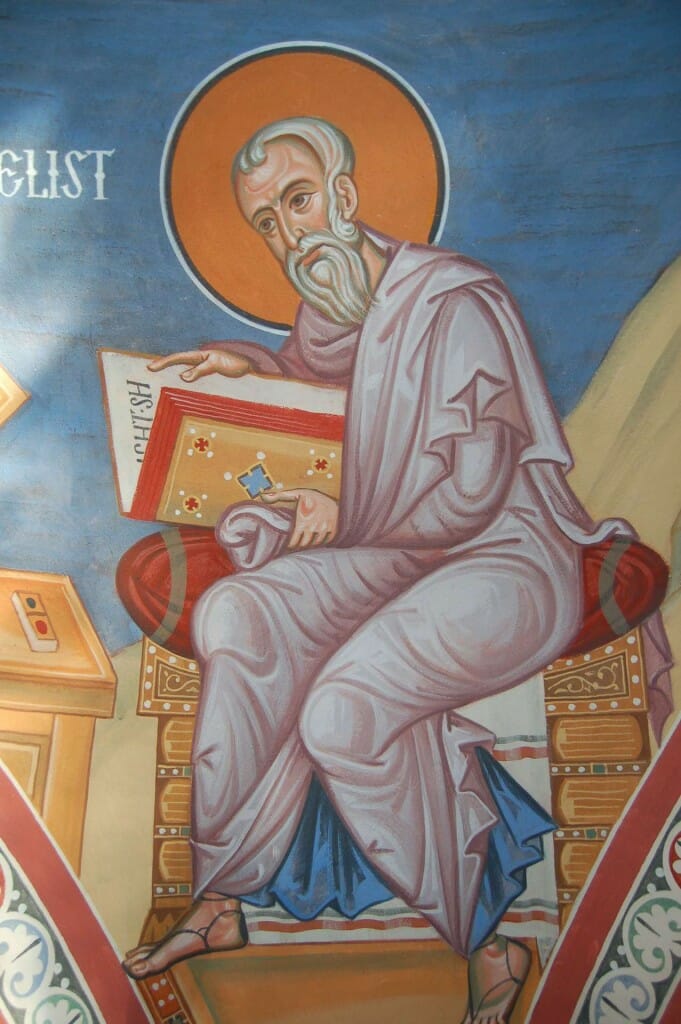














Extraordinary. Absolutely beautiful work.
My father confessor once told me: “You haven’t reached your potential…” When I look at such astonishing work I realize, as an Iconographer myself, I haven’t, and may never, reach my potential. May God continue to bless this Iconographer’s hands, and those who assist him in his sacred work!
The church is incredible, the paintings magnificent. Such talent can truly only be a gift from the Lord. God bless you all as you continue to use your abilities to glorify him. Amazing work!
absolutely beautiful work obviously Graced by the hand of God. i look forward to seeing the church on my return to south carolina. i have heard updates of the work and progress with excitement from some of my friends that are parishioners. i was curious why there was no gold used on the halos which would be tradition for icons? i was wondering if it was still early in the process. the work is outstanding. May God Bless the iconographer with Many years. in Christ, Cherie LeClair
Historically, gold was not normally used in iconographic murals on walls. There were some exceptions, and gold haloes are common in 19th-century Russian murals, but to be true to the medieval style in which our murals are painted, gold would not be appropriate. From a practical standpoint, gold is problematic in murals because gold leaf only ‘lights up’ if there’s a specific light source for it to reflect. Gold painted on a ceiling would only be reflecting the floor, and is likely to look dark, not bright, during the daytime.
Thanks on behalf of all the iconographers for having shared the images of this extraordinary work.
Breathtaking. Miraculous in an age of Religious Iconoclasm such a work can be written is a testament to Fatih! Magnificent.
Absolutely breathtaking. It is so inspiring to simply gaze upon their beauty . . . to behold the beauty of the Lord . . . to be reminded of Psalm 27:4 (NAS 1977)
One thing I have asked from the LORD, that I shall seek:
That I may dwell in the house of the LORD all the days of my life,
To behold the beauty of the LORD,
And to meditate in His temple.
Vladimir, you continue to amaze and inspire me!
Thank you again for posting these beautiful pictures. i again look forward to studying the work in person when i can get back south. Many Blessings to the iconographers who worked on the project. What an amazing gift to the Mount Pleasant, and surrounding community. Thank you Andrew for taking the time to answer my question. I learned something new:) A wonderful Christian tool that i will never stop learning about. God Bless and In Christ, Cherie